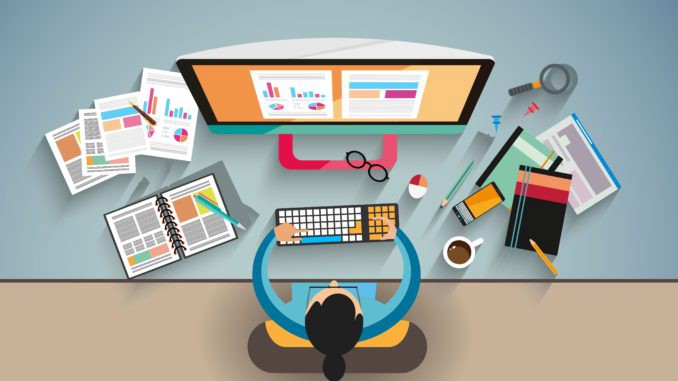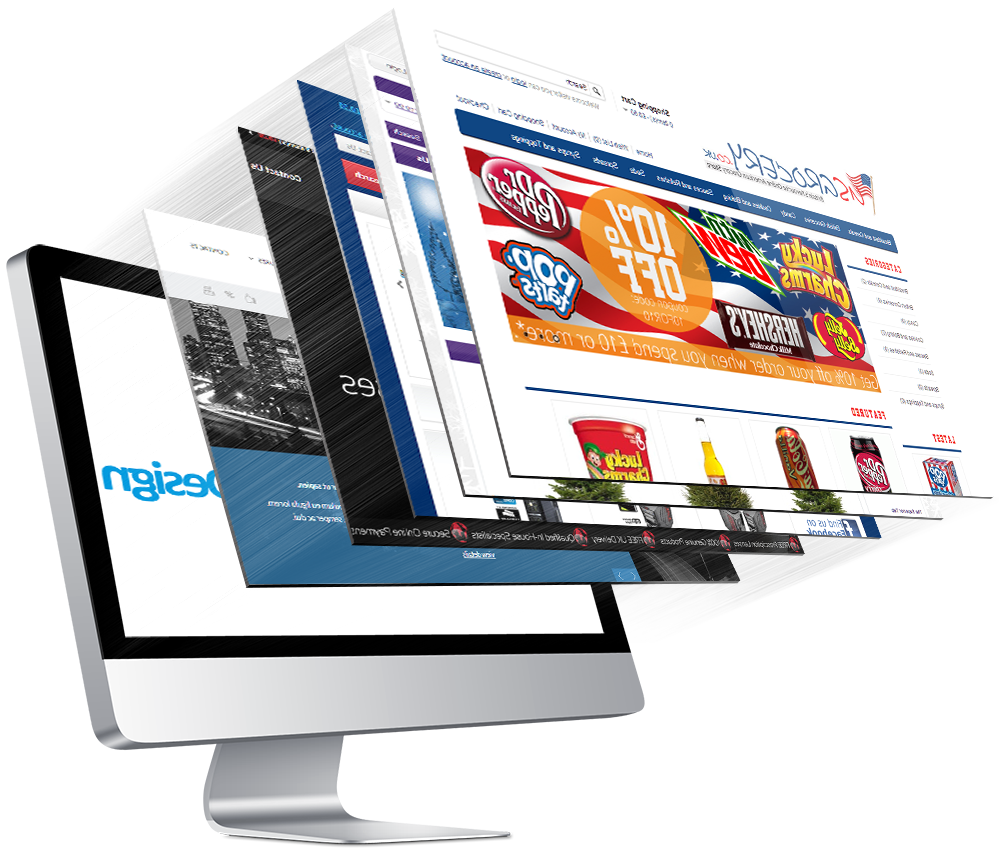Web Design London Ontario Deals for Every Business Size
How to Efficiently Combine Appearances and Capability in Web Style
When creating an internet site, you need to strike an equilibrium in between appearances and functionality. It's not practically looking excellent; your design ought to likewise serve a purpose and guide users efficiently. By concentrating on simplicity and user-friendly navigating, you can create an interesting experience. What aspects really enhance functionality while preserving visual charm? Allow's explore the key concepts that can bring about a harmonious blend of appeal and feature.
Comprehending the Value of Aesthetics and Capability
Recognizing the equilibrium in between visual appeals and functionality is necessary for developing an effective individual experience when you develop a site. A visually attractive site grabs focus, however it's the capability that maintains customers involved. Visitors will swiftly lose rate of interest and leave.Consider your target audience and what draws them in if your site looks great however is challenging to navigate. You intend to create a style that reflects your brand name while guaranteeing convenience of use. Structured formats, user-friendly navigating, and clear phone call to activity can improve both aesthetics and performance.

Concepts of Effective Website Design
To produce a reliable web layout, you need to stick to a number of crucial principles that enhance both user experience and aesthetic charm. Focus on simplicity; a tidy design aids users navigate conveniently. Use a consistent color design and typography to keep comprehensibility across your site. This promotes familiarity and trust.Next, assure your style is receptive. Users gain access to websites on different devices, so your layout should adapt flawlessly. Take note of aesthetic power structure; highlight essential elements with positioning, size, or color to assist customers' focus.Finally, include ample white space. It protects against clutter and makes web content a lot more absorbable. Remember, efficient website design equilibriums visual appeals and performance, so every layout selection should offer a purpose. By complying with these principles, you'll produce a website that's not just aesthetically enticing but also user-friendly, ultimately keeping visitors involved and urging them to return.
Focusing On Customer Experience
When focusing on individual experience, you'll desire to begin by recognizing what your individuals truly need. Simplifying navigation design can make a massive distinction in how quickly they find what they're searching for. Enhancing visual hierarchy assists assist their attention to the most important elements on your site.
Understanding User Needs
Understanding individual requirements is crucial for producing an interesting web experience that maintains site visitors returning. To attain this, you have to recognize the objectives and choices of your target audience. Start by conducting customer research study, like meetings or surveys, to collect insights on what users worth most. Take note of their pain factors and challenges when engaging with similar sites. This information permits you to tailor your layout, making certain performance aligns with individual expectations. Furthermore, think about creating customer characters that stand for different segments of your audience, aiding you visualize their demands throughout the layout procedure. When you focus on understanding user needs, you develop a site that not only looks fantastic yet additionally provides a smooth, pleasurable experience that fosters loyalty.
Simplifying Navigation Design

Enhancing Visual Pecking Order
A solid aesthetic hierarchy is crucial in assisting individuals with your site and guaranteeing they involve with crucial content. To achieve this, make use of dimension, spacing, and shade purposefully. Make essential aspects like headings larger and bolder than body message, attracting focus quickly. Use contrasting shades to highlight phone call to activity, urging clicks. Additionally, use ample white area to different sections, making content absorbable and inviting.Consider the circulation of info; set up components rationally, leading users' eyes from one point to the next. Use visual cues, like arrows or lines, to guide interest. By focusing on visual pecking order, you improve user experience and increase the possibility of conversions, guaranteeing your website is both aesthetically pleasing and functionally efficient.
Color Theory and Its Effect On Use
While selecting the appropriate shades for your web site may feel like a minor detail, it greatly affects use and user experience. Color influences just how individuals view details and can boost or impede navigation. For example, contrasting shades can help crucial components stick out, making it much easier for site visitors to discover what they need.Additionally, consider the psychology of shades: blue typically influences depend on, while red creates seriousness. Knowing your target market can lead your shade choices, guaranteeing they reverberate well.Moreover, constant color design aid construct brand name identity, making your web site extra memorable. Nonetheless, beware-- way too many shades can overwhelm individuals. Adhere to a limited combination that enhances your material and preserves clarity.Incorporating availability is additionally necessary; confirm your shade mixes get along for those with visual impairments. By thoughtfully using color theory, you'll enhance functionality and develop an extra interesting customer experience.
Typography: Balancing Style and Readability
Shade choices set the stage for your internet site, yet typography plays an equally crucial function in boosting user experience. You want your text to communicate plainly while also reflecting your brand name's personality. Begin by selecting fonts that are not just eye-catching yet likewise legible. Sans-serif font styles commonly function well for digital displays, as they're simpler to review at numerous sizes.Maintain a hierarchy by making use of different typeface dimensions and weights; this guides customers with your material effortlessly. Think about line spacing and letter spacing; as well tight can irritate viewers, while as well loose can interfere with the flow. Limit your font style selections to 2 or 3 to maintain the style cohesive.Finally, always examine your typography across various gadgets and internet browsers. What looks good on one display may out another. Balancing design with readability assurances that your message reverberates, keeping your audience engaged and informed.
Receptive Layout: Making Visual Appeals Deal With All Instruments
To assure your site looks excellent on any type of tool, you'll need to embrace receptive design concepts. This strategy assurances your website adapts to different screen sizes, giving a suitable individual experience. Beginning by making use of liquid grids and versatile photos that scale seamlessly. Rather than taken care of dimensions, select portions and relative devices, allowing your format to readjust dynamically.Next, implement media questions in your CSS. These allow you use different designs based upon gadget qualities, like display size. By doing this, you can preserve visual charm while guaranteeing functionality.Don' t ignore touch targets; make sure buttons and links are very easy to touch on smaller sized screens. Focus on necessary content, so customers can easily browse your site despite their device. By focusing on these elements, you'll produce an interesting, aesthetically appealing experience that fulfills the requirements of all individuals, whether they're on a tablet, desktop computer, or smart device .
Carrying Out Use Testing for Constant Renovation
To improve your website design, you need to establish clear usability goals that straighten with individual needs. By conducting user tests, you can collect important feedback on how real individuals engage with your site. Examining these results will certainly aid you make educated enhancements and develop an extra efficient individual experience.
Specifying Functionality Goals
While aesthetics can draw individuals in, defining usability objectives is necessary for guaranteeing their experience remains seamless and gratifying. Begin by identifying what you want customers to achieve on your site (website design london Ontario). Consider their actions, needs, and tasks. Are they trying to find info, purchasing, or enrolling in a newsletter? Develop clear standards to gauge success, like task conclusion prices or time on task. Prioritize user-friendly navigating, accessible material, and responsive design to enhance functionality. Routinely revisit these goals as customer expectations progress. By specifying use objectives, you develop a structure for examining and improving your internet site's efficiency. This concentrate on functionality not only enhances individual satisfaction however likewise enhances the total effectiveness of your style
Conducting User Examinations
Carrying out customer tests is essential for improving your internet site and guaranteeing it satisfies your audience's needs. Start by recognizing your target customers and producing a test strategy that describes your goals. Utilize a mix of qualitative and measurable approaches, such as studies, meetings, and task-based monitorings, to collect thorough comments. Welcome individuals to navigate your site while you observe their communications and keep in mind any type of troubles they come across. Motivate open discussion to capture their ideas and sensations about the layout and performance. Keep sessions brief and focused, guaranteeing you cover crucial areas without overwhelming users. Finally, ensure to document all findings, as this details will be very useful for making informed layout choices that enhance both visual appeals and usability.
Examining Examination Outcomes
How can you efficiently evaluate the outcomes of your usability tests to drive continual renovation? Begin by classifying responses right into usual styles. Try to find patterns in user click here actions that highlight pain factors or areas for improvement. Use quantitative data, like task conclusion prices and time on task, to measure functionality objectively. Do not forget to consider qualitative insights from user comments; they frequently reveal underlying concerns that numbers can't reveal. Prioritize the most impactful findings and produce workable items for your layout group. Bear in mind, it has to do with repeating-- implement changes, then examination once more. This cycle of screening, assessing, and refining aids you balance aesthetic appeals and functionality, ensuring your site satisfies user demands successfully while maintaining aesthetic allure.
Frequently Asked Concerns
How Do I Choose the Right Shade Scheme for My Site?
To choose the ideal shade palette for your web site, consider your brand name's character, target audience, and emotional effect (website design london Ontario). Usage color psychology, produce consistency, and assurance readability. Test combinations to see what reverberates finest with site visitors
What Devices Can Assist With Website Design Aesthetics and Performance?
You can make use of tools like Adobe XD, Figma, and Sketch to improve your internet layout's appearances and capability. These systems provide instinctive user interfaces, cooperation features, and pre-made themes to streamline your creative procedure and enhance your designs.
How Can I Integrate Animations Without Endangering Performance?
To incorporate computer animations without endangering performance, focus on refined results that enhance user experience. Use CSS animations for smoother interactions, guarantee fast load times, and examination on various gadgets to maintain performance while adding aesthetic allure.
What Are Common Errors to Avoid in Internet Design Visual Appeals?
When developing, avoid chaotic layouts, bad color options, and inconsistent font styles. Do not overlook mobile responsiveness, as it can estrange users. Confirm your style straightens with your brand, developing a smooth experience that involves visitors successfully.
Just how Frequently Should I Update My Internet site's Style for Optimal Appearances?
You need to upgrade your web site's style every 1-2 years to stay up to date with trends and keep optimal appearances. Routinely renewing visuals helps engage warranties and visitors your website remains appealing and easy to use. When you develop a site, comprehending the equilibrium between aesthetics and performance is vital for creating a reliable user experience. To produce an effective internet layout, you need to stick to a number of key concepts that improve both customer experience and aesthetic charm. Customers gain access to web sites on various tools, so your style needs to adjust effortlessly. When focusing on customer experience, you'll desire to begin by understanding what your users genuinely need. Beginning by conducting user research, like interviews or studies, to collect insights on what customers worth most.